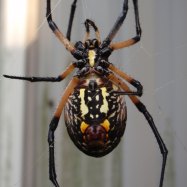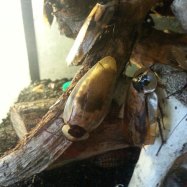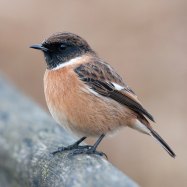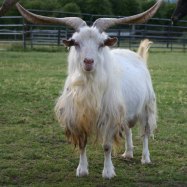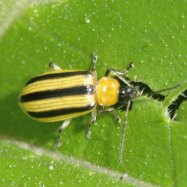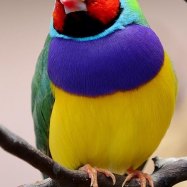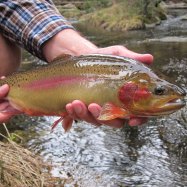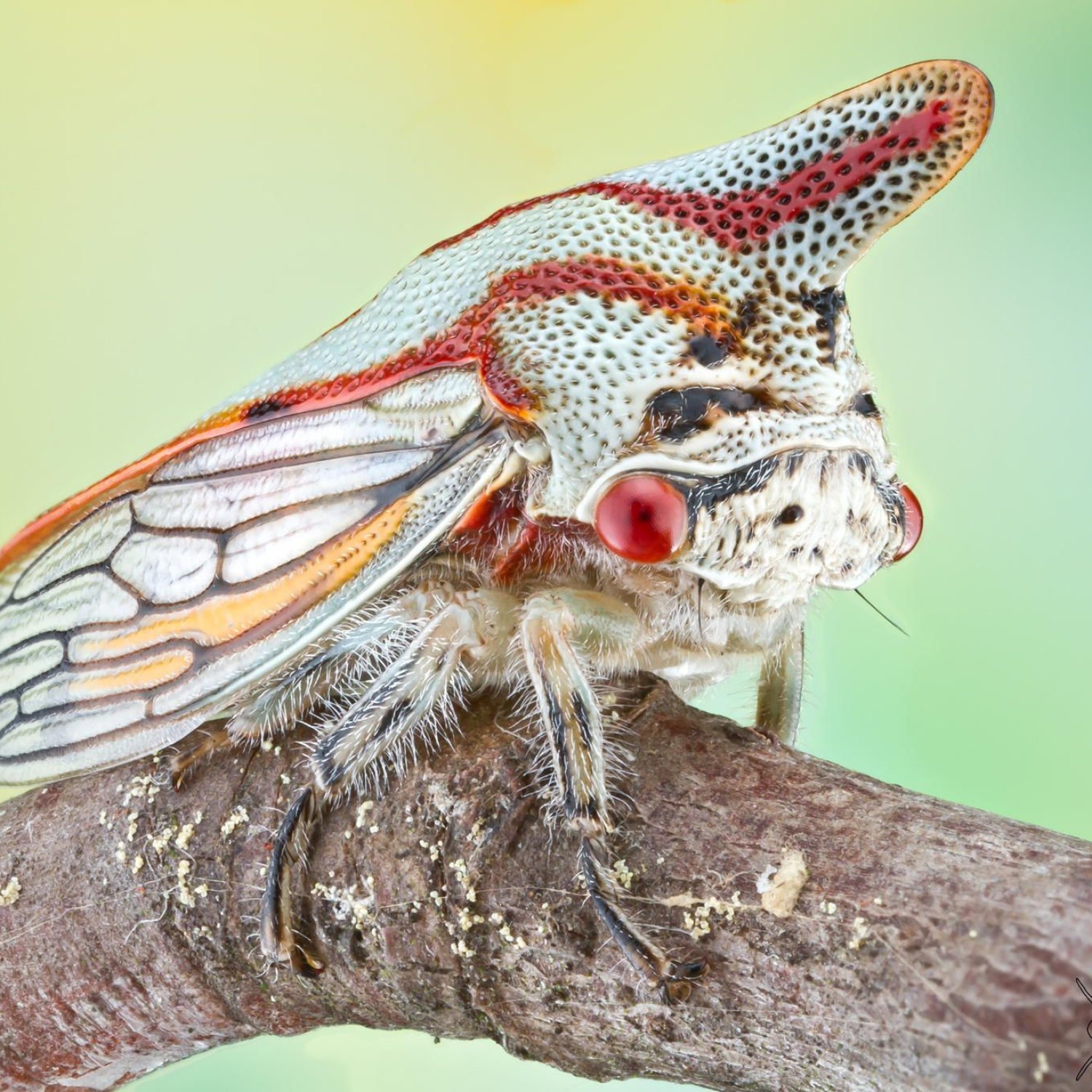
Treehopper
2-22 mm
The Treehopper, also known as Membracidae, is a small but fascinating insect that can be found on trees and shrubs. With a compact body and a large pronotum, these creatures come in various sizes ranging from 2-22 mm. Keep an eye out for these unique animals next time you're in nature! #Treehopper #Membracidae #NatureFacts #Insects #Wildlife
Animal Details Summary:
Common Name: Treehopper
Kingdom: Animalia
Habitat: Tropical and subtropical forests
The Intriguing Treehopper: A Master of Camouflage in the Insect World
Hidden amongst the lush foliage of tropical and subtropical forests, there exists a fascinating creature that often goes unnoticed. With its small, compact body and unique camouflage, the treehopper is a master of disguise in the insect world.As its name suggests, the treehopper belongs to the family Membracidae, which consists of over 3,000 species. These insects, also known as "thorn bugs," are found in the Americas, Africa, and Asia, making them a global phenomenon Treehopper. Despite their widespread distribution, the treehopper remains a mysterious and understudied insect that continues to captivate researchers and nature enthusiasts alike.
A Kingdom of Diversity
As part of the animal kingdom, the treehopper belongs to the phylum Arthropoda, alongside other creatures with segmented bodies and jointed legs. Within this phylum, they are classified under the class Insecta, known for its wide range of diversity and adaptability. From tiny ants to enormous beetles, insects have conquered almost every environment and niche on Earth, and the treehopper is no exception.Treehoppers belong to the order Hemiptera, also known as the true bugs. This order includes other insects such as cicadas, aphids, and stink bugs. True bugs have piercing-sucking mouthparts, which allow them to suck sap from plants, making them herbivorous. In this aspect, treehoppers are beneficial for the ecosystem, as they play a vital role in controlling plant populations.
A Family Like No Other
Out of all the orders in the insect class, the treehopper stands out due to its family, Membracidae Turtle Frog. This family consists of unique-looking insects with a distinct feature – a large, pronotum. This structure, which looks like a thorn or a horn, gives the treehopper its characteristic "thorny" appearance, hence the nickname "thorn bug."The pronotum is located on the insect's thorax and serves as a defensive structure, protecting the head and vital organs. But aside from its function, the pronotum is also a crucial part of the treehopper's camouflage, as it helps them blend in with their surroundings.
A Habitat of Greenery
Treehoppers are mainly found in tropical and subtropical forests, where vegetation is abundant. These insects are true masters of camouflage, and their appearance varies depending on the species and the habitat they live in. Some have spiny protrusions, while others have intricate patterns and colors that mimic the patterns and colors of leaves, twigs, or bark.This remarkable adaptation allows treehoppers to hide from predators such as birds, spiders, and other insects. It also makes them challenging to spot, despite their size, which ranges from 2 to 22 mm, depending on the species.
A Worldly Distribution
With over 3,000 species, it's no surprise that treehoppers can be found in various parts of the world. These insects are present in the Americas, Africa, and Asia, and their distribution often depends on the type of vegetation in a particular region. For instance, some species are specific to certain types of trees, while others can be found in a broader range of habitats.The country of origin for treehopper species varies, but they are most prevalent in Brazil, where more than 800 species have been recorded. However, these insects are also widely distributed in other parts of the world, including the United States, Australia, and parts of Europe.
A Life Among the Greenery
Given their natural habitats and camouflage abilities, it's not surprising that treehoppers spend their lives on trees and shrubs. These insects are virtually invisible to the human eye, as they blend in seamlessly with the vegetation. However, one can spot them by looking closely at leaves, where they feed on sap using their specialized mouthparts.Treehoppers undergo a process of metamorphosis, which means they go through different stages of growth before reaching adulthood. They begin as eggs, which are laid on plants, and then hatch into nymphs. The nymphs resemble smaller versions of adult treehoppers and go through several molting stages before reaching maturity.
A Palette of Colors
While treehoppers have a distinctive body shape, their coloration varies depending on the species and habitat. Some species have vibrant colors such as red, yellow, or green, while others have more muted tones that make them almost indistinguishable from the surrounding foliage.The colors of treehoppers also play a role in attracting potential mates. In certain species, females are choosy when it comes to their partners and are more likely to mate with males that have brighter colors or more intricate patterns.
An Insect of Many Shapes
Aside from their unique colors, treehoppers also come in a variety of shapes and sizes. Some species have long and slender bodies, while others are round and compact. However, what sets them apart from other insects is their large, pronotum, which can take on different shapes and sizes. Some pronotums resemble thorns or horns, while others have intricate patterns and designs that help them blend in with their environment.A Nurturing Parent
Despite their small size, treehoppers display a behavior that is usually associated with more advanced animal species – parental care. Female treehoppers lay their eggs on plants, and the nymphs hatch within a few days or weeks, depending on the species. Once the nymphs emerge, the female stays close by to protect and feed them until they go through their molting stages and become independent.This remarkable behavior is not common among insects, and it's one of the reasons why treehoppers continue to fascinate researchers. It also shows that these insects have evolved unique survival strategies that have allowed them to thrive in different environments.
An Important Role in the Ecosystem
The treehopper may seem like an insignificant creature in the grand scheme of things, but they play a crucial role in maintaining the balance of their ecosystem. As herbivores, they feed on plant sap, a process that stimulates the growth of new leaves and shoots. This enables plants to produce more food, which supports the survival of other animals in their habitat.Additionally, treehoppers are also a vital food source for many predators, providing a crucial link in the food chain. By maintaining the population of treehoppers, these insects indirectly contribute to the health and diversity of their habitat.
A True Master of Camouflage
The treehopper is a perfect example of how fascinating and diverse the insect world can be. With its unique body shape, colors, and behavior, this insect has found a way to thrive in different environments and remain undetected by most predators.From its disguised appearance to its hidden life on trees, the treehopper continues to intrigue researchers and nature enthusiasts alike. And as we uncover more about this mysterious creature, it's clear that there is much more to learn and appreciate about this master of camouflage in the insect world.

Treehopper
Animal Details Treehopper - Scientific Name: Membracidae
- Category: Animals T
- Scientific Name: Membracidae
- Common Name: Treehopper
- Kingdom: Animalia
- Phylum: Arthropoda
- Class: Insecta
- Order: Hemiptera
- Family: Membracidae
- Habitat: Tropical and subtropical forests
- Feeding Method: Herbivorous
- Geographical Distribution: Found in the Americas, Africa, and Asia
- Country of Origin: Varies depending on the species
- Location: Trees and shrubs
- Animal Coloration: Varies depending on the species
- Body Shape: Small, compact body with a large, pronotum
- Length: 2-22 mm
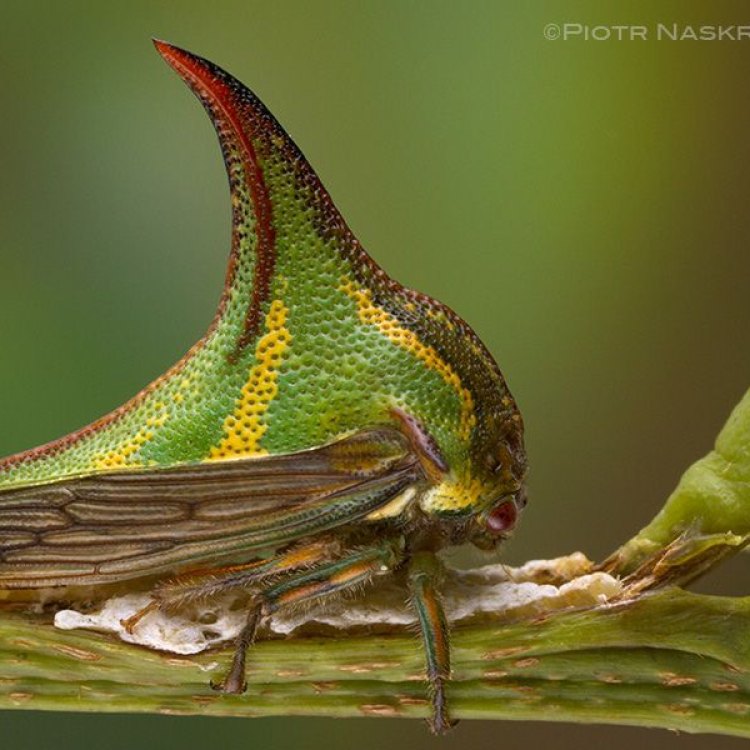
Treehopper
- Adult Size: Varies depending on the species
- Average Lifespan: 1-3 months
- Reproduction: Sexual
- Reproductive Behavior: Females lay eggs on plant stems or leaves
- Sound or Call: Some species produce sounds by vibrating their bodies
- Migration Pattern: Not known for long-distance migrations
- Social Groups: Solitary
- Behavior: Treehoppers use their enlarged pronotum to mimic thorns or other plant parts for camouflage
- Threats: Predation by birds, spiders, and other insects
- Conservation Status: Not assessed for all species
- Impact on Ecosystem: Play a role in pollination and nutrient cycling
- Human Use: Not significant
- Distinctive Features: Enlarged pronotum that resembles part of the host plant
- Interesting Facts: There are over 3,600 known species of treehoppers
- Predator: Birds, spiders, other insects
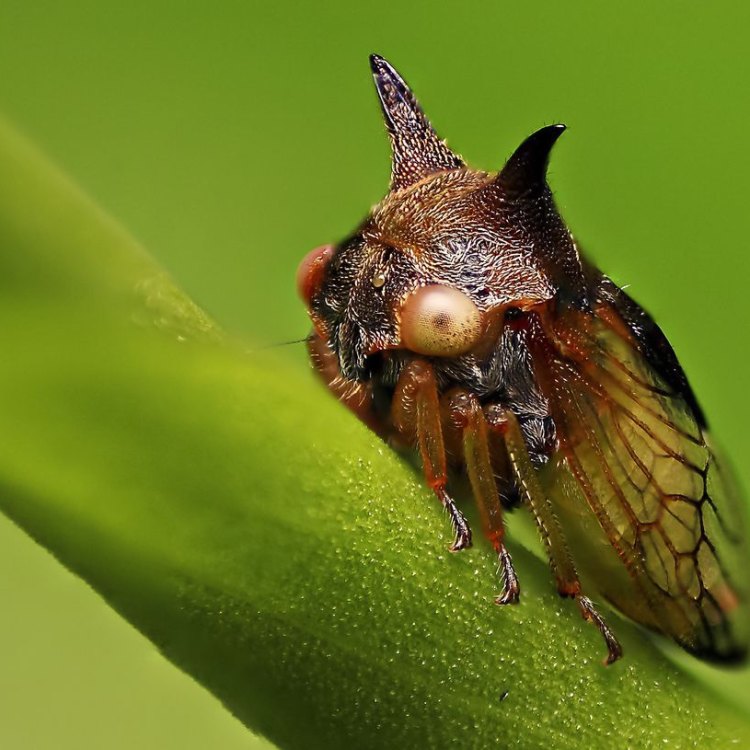
Membracidae
The Fascinating World of Treehoppers: Masters of Camouflage and So Much More
Have you ever heard of a Treehopper? If you are not an entomologist or an avid insect enthusiast, chances are you haven't. Yet, this mysterious and often overlooked insect has some truly remarkable features that make it stand out in the vast world of insects.Hailing from the family Membracidae, there are over 3,600 known species of treehoppers, each one with unique characteristics and behaviors. From its peculiar appearance to its important role in ecosystems, the treehopper is a truly fascinating creature worth learning about PeaceOfAnimals.Com.
Enigmatic and Versatile: The Adult Size and Lifespan of Treehoppers
The first thing that sets treehoppers apart is their adult size, which can vary greatly depending on the species. While some can be as small as a grain of rice, others can reach up to two inches in length. Its versatile size allows treehoppers to inhabit different environments, from tropical rainforests to temperate forests.Speaking of versatile, the average lifespan of a treehopper can also vary greatly, ranging from 1-3 months. This may seem like a short amount of time, but for an insect, it is considered to be a relatively long life span. Despite their short lifespan, treehoppers are still able to leave a significant impact on the ecosystem, as we will discover later in this article.
A Unique Reproduction Process: Sexual and Egg-Laying
Like many insects, treehoppers reproduce sexually. However, their reproductive behavior is quite unique. Females lay their eggs on plant stems or leaves, where they will hatch and develop into nymphs Toy Fox Terrier. This process not only ensures a safe and nutrient-rich environment for the young treehoppers but also helps to disperse the species across different regions.Sounds of Nature: The Treehopper's Vibrations and Communication
Have you ever wondered about an insect's ability to produce sounds? Well, some species of treehoppers have mastered this skill through the vibrations of their bodies. These vibrations can be heard by other treehoppers and can serve as a form of communication, especially during mating or warning of potential danger.However, not all treehoppers produce sounds. Some are silent and rely solely on their camouflage and other defense mechanisms to survive.
Settling Down: The Migration Pattern and Social Groups of Treehoppers
Unlike certain species of birds or insects, treehoppers are not known for their long-distance migrations. They prefer to stay in one location, where they can establish their territories and feed on the local vegetation.In terms of social groups, treehoppers are solitary creatures. They do not form colonies like ants or bees, and while they may share the same host plant, they are not dependent on each other for survival.
Masters of Disguise: The Ingenious Behavior of Treehoppers
One of the most distinctive features of treehoppers is their enlarged pronotum. This is a part of their exoskeleton that covers their thorax, and in treehoppers, it is enlarged and often resembles a thorn or a leaf. This is not just a strange physical characteristic, but it also serves a crucial purpose in the treehopper's survival – camouflage.By mimicking parts of their host plant, treehoppers are able to blend in and avoid being detected by predators. This behavior is especially effective against birds, spiders, and other insects that prey on treehoppers. In fact, some treehopper species have taken their camouflage to the next level and have evolved to resemble other insects, such as ants or wasps, to confuse and deter potential attackers.
A Constant Threat: The Predators of Treehoppers
Despite their camouflage and other defense mechanisms, treehoppers are still under constant threat from their predators. As mentioned earlier, birds, spiders, and other insects are the main predators of treehoppers. They are often attracted to the treehoppers by their vibrations or sounds, making it difficult for them to hide.Aside from predatory animals, treehoppers also face threats from human activities such as habitat destruction and the use of pesticides. These human-induced threats not only affect treehoppers but also have a significant impact on the ecosystem.
A Valuable Role: The Impact of Treehoppers on the Ecosystem
Although they may seem insignificant, treehoppers play an essential role in the ecosystem. They are known to be pollinators, helping to transfer pollen between flowers and aiding in plant reproduction. Additionally, as they feed on the sap of plants, they also contribute to nutrient cycling, which is crucial for the health of the plant and the surrounding environment.Trees, which are the main hosts for treehoppers, also benefit from their presence. The treehoppers' movements and vibrations help to disperse excess sugars in the tree's sap, preventing the build-up of harmful fungi and bacteria.
A Forgotten Species: The Conservation Status of Treehoppers
Despite their unique features and important role in the ecosystem, many species of treehoppers have not been assessed for their conservation status. This is due to the lack of research and attention towards these creatures. However, with increasing awareness about the importance of all species in the ecosystem, there has been a growing interest in studying and conserving treehoppers.Some scientists believe that the loss of treehopper species could have significant consequences on the ecosystem, as they are an important link in the food chain and have a symbiotic relationship with their host plants.
The Human Factor: The Limited Use of Treehoppers
In terms of human use, treehoppers do not play a significant role. They are not considered pests or carriers of diseases and are not used for food or medicine. However, some cultures do have traditional uses for treehoppers, such as using them for dye or as a source of protein in some communities.Unmatched Features: The Distinctive Appearance of Treehoppers
Apart from their enlarged pronotum, treehoppers have some other distinctive physical features. They have large, strong hind legs that allow them to jump from plant to plant. They also have long antennae that help them to sense their surroundings and locate their host plants.Another interesting fact about treehoppers is their vast diversity in appearance. Each species has its own unique coloration and patterns, making it a delight for entomologists to study and for nature enthusiasts to observe.
The Endless Wonders of Treehoppers
From its peculiar appearance to its important role in the ecosystem, there is no denying that treehoppers are truly remarkable creatures. With over 3,600 known species, each one with its own unique features and behaviors, there is still so much to uncover and learn about these intriguing insects.And who knows, perhaps with more research and conservation efforts, treehoppers will no longer be just a little-known species, but a renowned and appreciated part of our natural world. So next time you see a strange-looking insect on a plant, take a closer look – it may just be a treehopper.
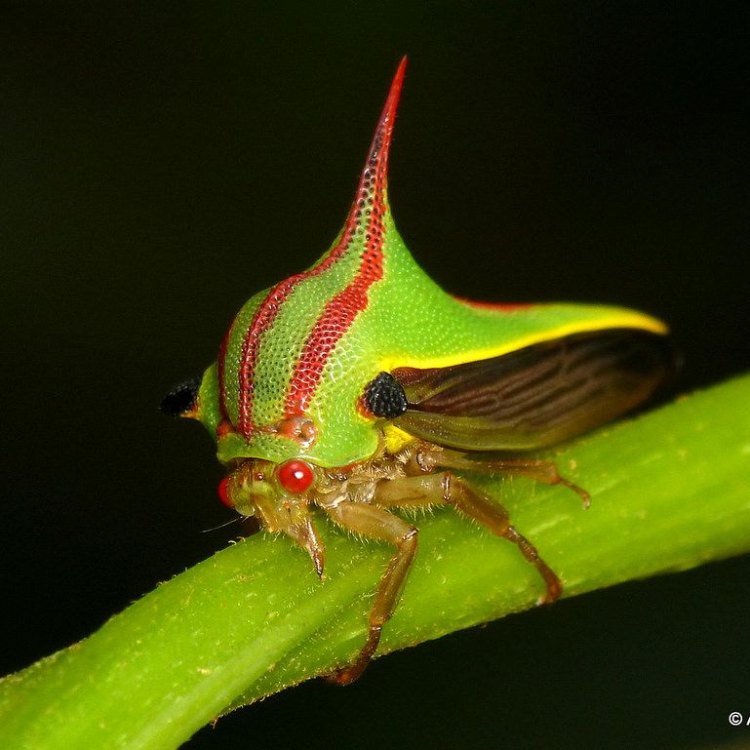
The Intriguing Treehopper: A Master of Camouflage in the Insect World
Disclaimer: The content provided is for informational purposes only. We cannot guarantee the accuracy of the information on this page 100%. All information provided here may change without prior notice.

